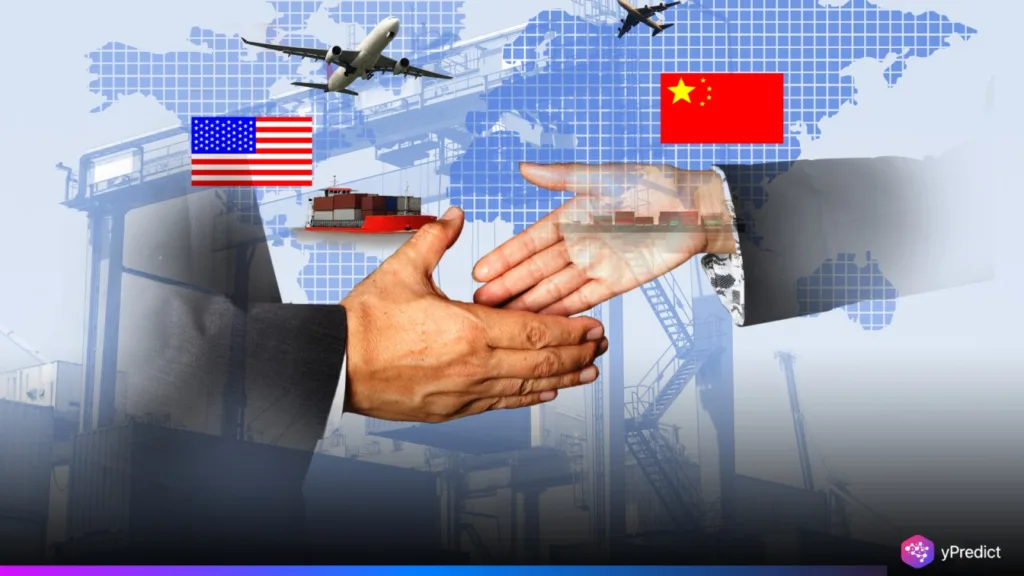
China is ramping up efforts to showcase its technological resilience amid escalating U.S. export restrictions and trade tensions. On a rare government-organised media tour, Chinese tech firms across AI, robotics, biotech, and automotive sectors emphasised growing self-sufficiency and innovation, even without access to advanced U.S. semiconductors. As Beijing counters Washington’s pressure with strategic messaging and rare earth export controls, the tour underscores China’s Tech Self-Reliance and determination to assert global tech leadership while navigating a rapidly shifting geopolitical and economic landscape.
China Tech Self-Reliance Rises Amid Rising U.S. Tech Pressure
As the U.S. intensifies ITS export restrictions on advanced technologies to pressure Beijing into securing critical rare earth magnet supplies, China is countering with a bold demonstration of its growing technological independence. On a government-arranged media tour through Jiangsu and Zhejiang, two provinces known for their wealth and innovation, officials showcased a range of domestic tech firms, reinforcing a narrative of resilience in the face of external pressure.
Executives from across sectors, including AI, robotics, pharmaceuticals, and automotive technology, met with foreign journalists in a rare show of openness. The overarching message was clear: China’s tech industry continues its drive toward global leadership, even as it navigates tightening restrictions from Washington.
One such example is Magiclab Robotics Technology, based in Suzhou and founded just over a year ago. Company president Wu Changzheng revealed that over 90% of its humanoid robot components are made in-house. The remaining parts, including microcontroller units and semiconductors, are sourced domestically or from non-U.S. suppliers.
Changzheng downplayed recent U.S. export bans, noting his company relies only on standard chips and avoids high-end American designs. Showcasing a full-sized industrial robot, he emphasised China’s strength in the sector. This focus on self-reliance reflects President Xi’s push to strengthen domestic tech, with executives viewing U.S. curbs as a catalyst for innovation rather than a barrier.
Beijing’s Strategic Showcase: Investor Reassurance and Policy Messaging
By granting foreign media such extensive access, an uncommon gesture in China’s tightly controlled media environment, Beijing sent a calculated message. The tour aimed to signal both internal confidence and outward appeal to global investors, particularly as the country wrestles with economic headwinds including deflation, a prolonged real estate crisis, and the harshest U.S. tariffs in modern history.
DeepSeek’s AI breakthrough without top-tier chips was a highlight of the tour. Most showcased firms, like AISpeech Co., operate in sectors that don’t require advanced semiconductors. However, high-end hardware remains critical for fields like AGI and autonomous driving. Executives sidestepped subsidy discussions, focusing instead on local talent and independent supply chains as strategic strengths.
AISpeech’s co-founder, Yu Kai, detailed the company’s growth from fewer than 10 researchers in Cambridge to over 700 employees in Beijing and Suzhou, with additional units in Shenzhen and southern China focused on smart equipment and automotive software. The visit reflected China’s broader effort to shift the narrative toward self-reliance, even as companies face ongoing hurdles without access to advanced Western technologies.
Geopolitical Realignment and Corporate Survival Under Strain
Despite projecting confidence, Chinese officials remain wary of the long-term effects of U.S. tech curbs. Recent export controls on rare earth magnets aim to regain leverage, with a Geneva trade deal committing Beijing to maintain critical supplies. As the media tour moved from Nanjing to Suzhou and Zhejiang, the spotlight turned to green innovation, with Nanjing’s strong research output highlighted. Still, debate persists over the necessity of advanced chipmaking tools and Nvidia accelerators for future AI growth.
Huawei’s founder, Ren Zhengfei, suggests Chinese firms can bypass banned technologies through methods like chip stacking. Analysts, including Julian Mueller-Kaler of the Stimson Centre, argue U.S. export curbs may hasten China’s tech self-sufficiency by pushing firms to develop homegrown solutions, even if they rely on less efficient alternatives.
Nevertheless, many firms are feeling the strain of decoupling from U.S. investment and supply chains. Zhang Jinhua, chairwoman of IASO Biotechnology, highlighted funding challenges and urged her team to treat ongoing uncertainty as the new normal. For China’s tech sector, survival now hinges on turning constraints into innovation, embracing self-reliance, and navigating persistent chip access hurdles with resilience and patience.







